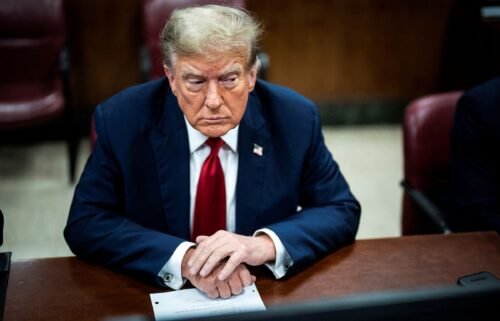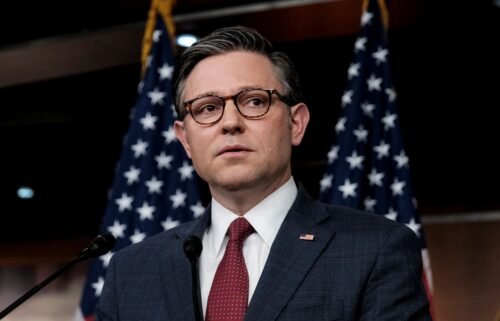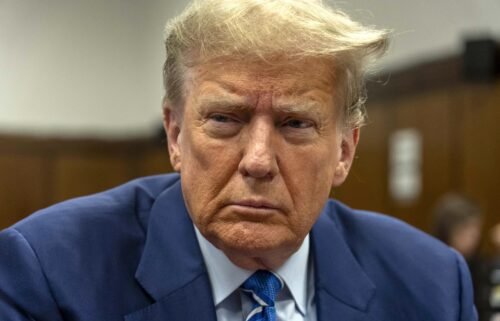Confusion reigns over US plan to ‘secure the oil’ in Syria as commanders await orders

US military commanders overseeing Syria operations are still waiting for precise battlefield orders from the White House and Pentagon on their exact mission to protect oilfields in eastern Syria, according to a defense official directly familiar with the matter.
Nearly three weeks after President Donald Trump ordered troops out of northern Syria, publicly declaring he was taking “control” of the oil and sending troops and armored carriers to protect it from ISIS, US commanders lack clarity on the most basic aspects of their mission, including how and when troops can fire their weapons and what, exactly, that mission is.
The lack of precise orders means troops are on the ground while critical details are still being worked out — exactly where they will go, when and how they will stay on small bases in the area, and when they go on patrol.
Perhaps most crucially, there is no clarity about exactly who they are operating against in the oilfields.
That’s essential information for troops on the ground and in the air to understand circumstances in which they are permitted to fire their weapons. It’s also crucial for military planners to understand how many US combat ground forces and aircraft are needed, the official said.
The precision that’s lacking is vital for military commanders, who need specific, legal orders that are not subject to interpretation in moments of crisis.
Confusion
The confusion that commanders in Syria are now wrestling with — precisely the situation military planners seek to avoid — reflects Trump’s sudden, unexpected decision to pull troops out of Syria after a phone call with Turkish President Recep Tayyip Erdogan. Trump’s move, which caught some in the military by surprise, is widely seen as strengthening Iran, Russia, Syria, Turkey and ISIS, as well as having betrayed Kurdish allies, the Syrian Democratic Forces who fought the terrorist group alongside the US.
Since Trump’s decision, the Syria mission itself has been defined in differing ways. There is no approved military task for specifically how US troops will take “control” of the oil and no decision whether the US should also protect other oil fields in northeast Syria beyond Deir Ezzor area, where they’re currently present.
One stark indication of the ongoing uncertainty came earlier this week at a Pentagon press conference. CNN asked Defense Secretary Mark Esper whether the mission would include “denying access, preventing Russian or Syrian forces which now have changed the battle space.”
Esper responded “the short answer is yes, it presently does, because in that case we want to make sure that SDF does have access to the resources,” opening the door to combat operations against either of those nations’ forces in instances other than self-defense.
But the defense official said there have been no decisions made yet on the battlefield role of US troops in those oilfields and that they are desperately needed.
Privately, military officials say there is nothing in place to address the possibility that Syrian or Russian tanks or aircraft might approach the oil fields. The plan for now, officials say, is to declare the US presence and warn other players not to get close.
“So many of these basic questions are as yet unanswered,” said William Wechsler, a former deputy assistant secretary of defense for special operations and combatting terrorism. “There’s no doubt that the folks in uniform that have to execute this at the end of the day need those answers quickly.”
The very decision to add more troops and fighting vehicles appeared to be a reversal of Trump’s initial emphatic declaration that the US was getting out. The shift came after security officials and Republicans critical of the President’s decision appeared to convince him to act more robustly to defend the oil.
“Our professional military officers and diplomats don’t want to leave Syria,” said Wechsler, now Director of the Rafik Hariri Center and Middle East programs at the Atlantic Council. He noted that the arguments that traditionally resonate with presidents — including maintaining American credibility and deterrence, countering terrorism and thwarting Iran, “these don’t seem to resonate strongly with this president.”
The one argument that does work for Trump: the oil.
“It’s the only argument that resonates with the President and thus becomes the excuse that we need to keep forces there to protect other interests,” Wechsler said. While the oil justification seems to have worked, “using it as an excuse opens up a whole series of other questions,” he noted.
Among them, Wechsler says, are what the legal basis for the US presence is, especially since the Assad government hasn’t asked for it? What exactly is the mission? What are the rules of engagement beyond self-defense? How does the US define success?
Speaking to Chicago policemen on Oct. 28, Trump didn’t offer answers to those questions. He said the US didn’t want to be a policeman” in the region, but added, “we’re keeping the oil. Remember that. I’ve always said that. Keep the oil. We want to keep the oil.”
The statement won praise from Syrian President Bashar al-Assad, who told state TV on Thursday that Trump is the best of the US presidents because he is “the most transparent.”
“All the US Presidents commit crimes, but get Nobel prizes, and act like defenders of human rights and the noble unique US values — or Western values — but they are a group of criminals who act on behalf of lobbies,” Assad said. Trump’s declaration that “‘we want the oil’ — at least that’s honest,” the Syrian dictator said.
Trump made his remarks to the Chicago police after telling reporters he was considering making a deal with a US oil company to go into Syria. It remains unclear what legal basis the US government would have for controlling or taking the oil in Syria.
But the President has made it clear he is willing to see US troops fight for it. “We are leaving soldiers to secure the oil. And we may have to fight for the oil. It’s okay,” Trump said Oct. 27 at the White House. “Maybe somebody else wants the oil, in which case they have a hell of a fight.”
Bradley armored troop carriers and dozens of troops have already arrived in eastern Syrian oilfield areas this week. Those troops are mainly in the Deir Ezzor area, but there are other oil areas to the northeast that would also possibly still need some US presence, the defense official said.
That decision also has yet to be made.
‘Any incursions’
For now, the military sees its mission as “defending against any incursions,” to be able to “enable the Syrian Democratic Forces to prevent ISIS from gaining access to the oilfields,” the defense official said.
Esper has publicly offered potentially differing language on the mission with few details on how US troops will actually operate.
“We will secure oil fields to deny their access to ISIS and other actors in the region and to ensure the SDF has continued access because those resources are important,” he said Thursday.
When asked if that means the US will “take” the oil fields, as Trump has said, Esper responded with somewhat unusual wording. “I interpret that as deny ISIS access to the oil fields,” he said.
Currently, there are still about 900 troops in Syria, just under the 1,000 estimated force level when the withdrawal began last month, because of the additional forces going in.
The numbers of troops will fluctuate in the coming weeks due both to withdrawals from northern Syria and the addition of troops in the east. But the defense official said it’s possible that about 900 will be the overall force level for some time.




